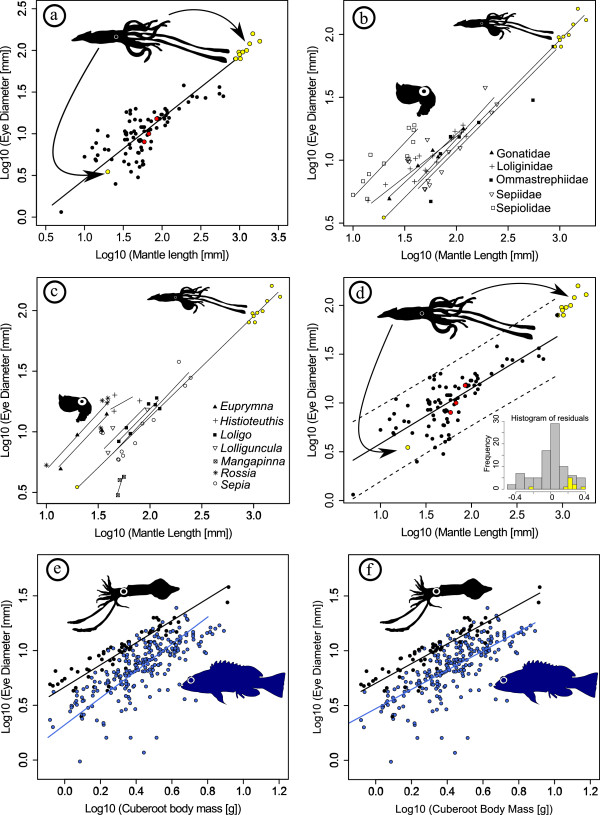Figure 2.
Relative eye size in squid and fish. (a) The plot of log10-transformed eye diameter against log10-transformed mantle length suggests that giant squid do not have unusually large eyes for their body size. All sampled individuals of giant squid (yellow) and colossal squid (red) fall directly on the projected SMA line calculated from averages of 85 squid species. (b) and (c) In particular sepiolids (e.g., Rossia and Euprymna) tend to have large eyes for given body size, but also Gonatidae and Loligonidae slightly exceed the relative eye size of giant squid. The fitted lines represent SMA lines. (d) The same conclusion can be drawn from an OLS regression, even though this method is known to underestimate the slope. All giant squid and colossal squid fall within the projected 95% prediction belts. The plot or residuals from the OLS regression line demonstrates that giant squid may have larger than average eyes, but not outside the distribution of other squid (e) The plot of log10-transformed eye diameter against log10-transformed cuberoot body mass shows that many squid (black) have larger relative eye size than acanthomorph fishes (blue). SMA lines suggest that eye size differences between squid and fish become smaller for larger body sizes. (f) OLS regression lines indicate that differences persist, with squid having on average about 1.7x the eye diameter of acanthomorph fish for a given body size.

